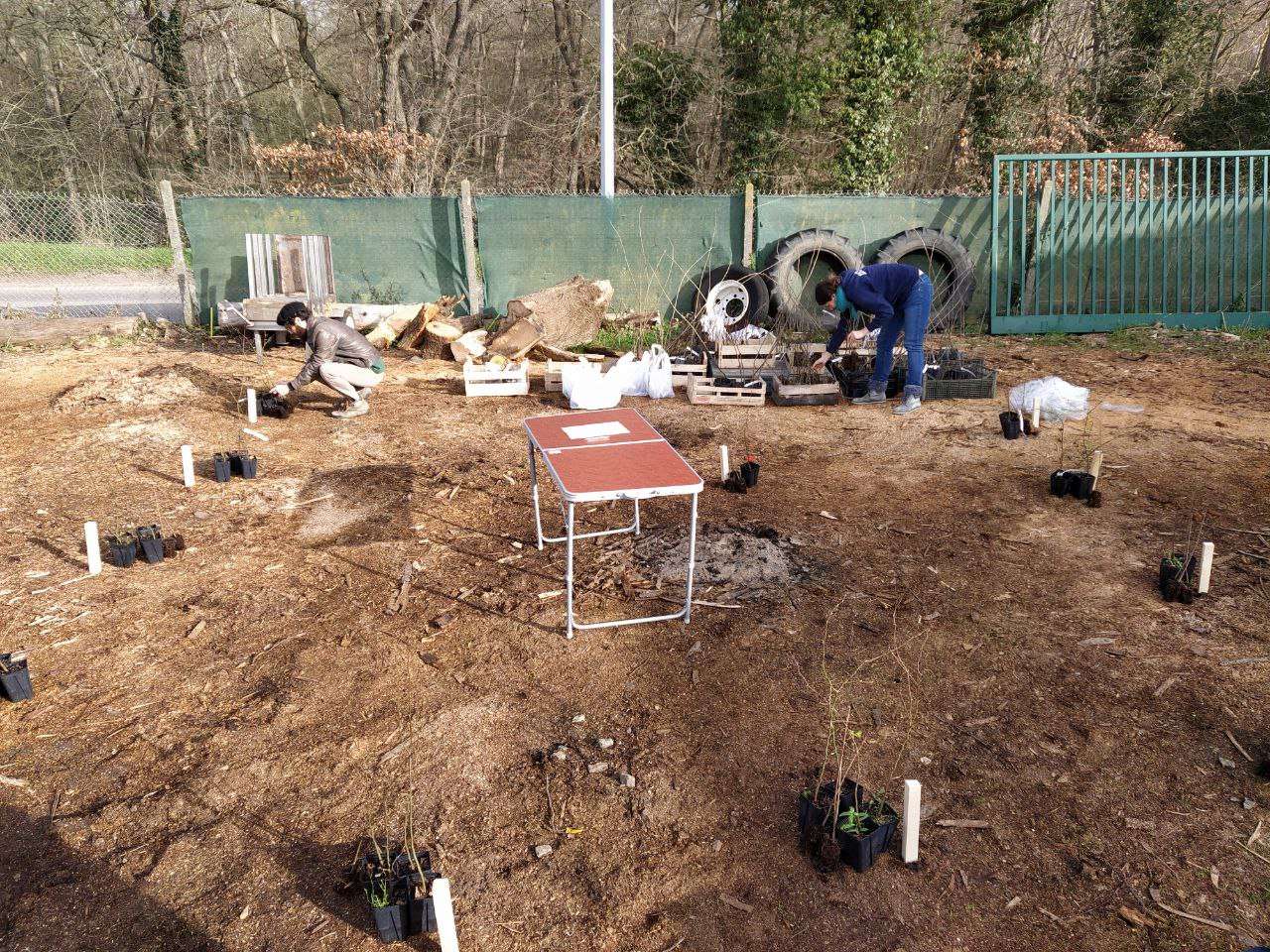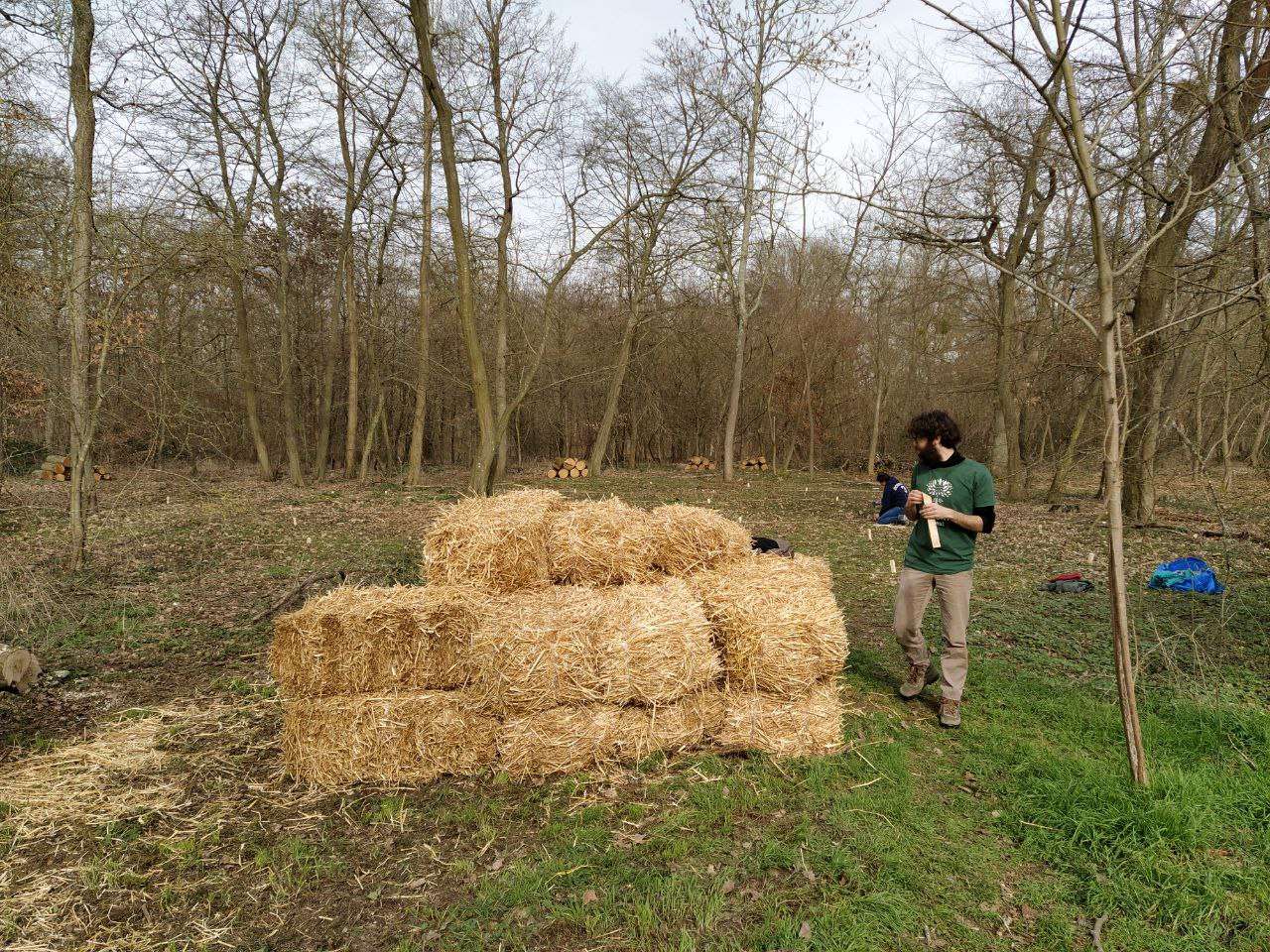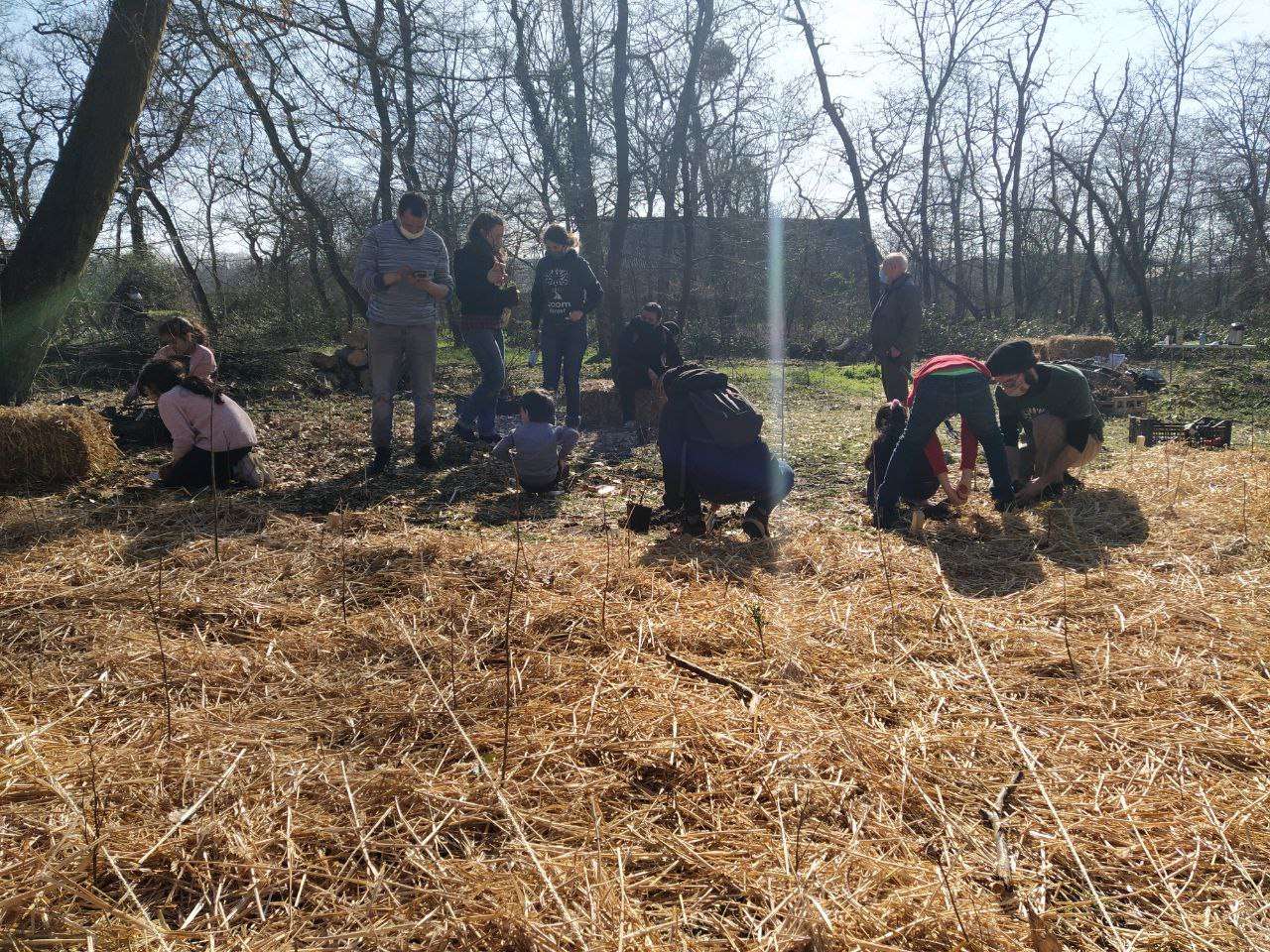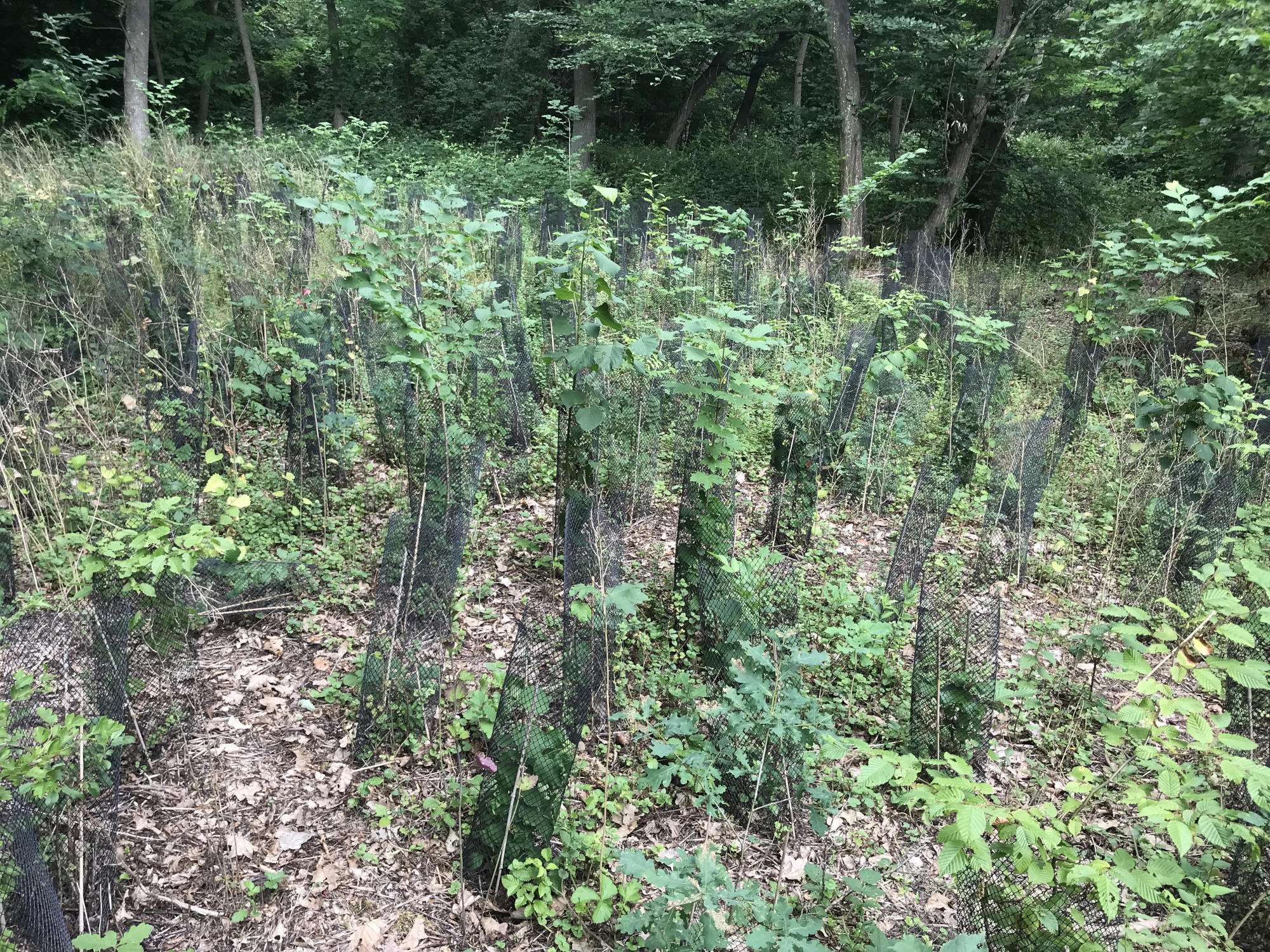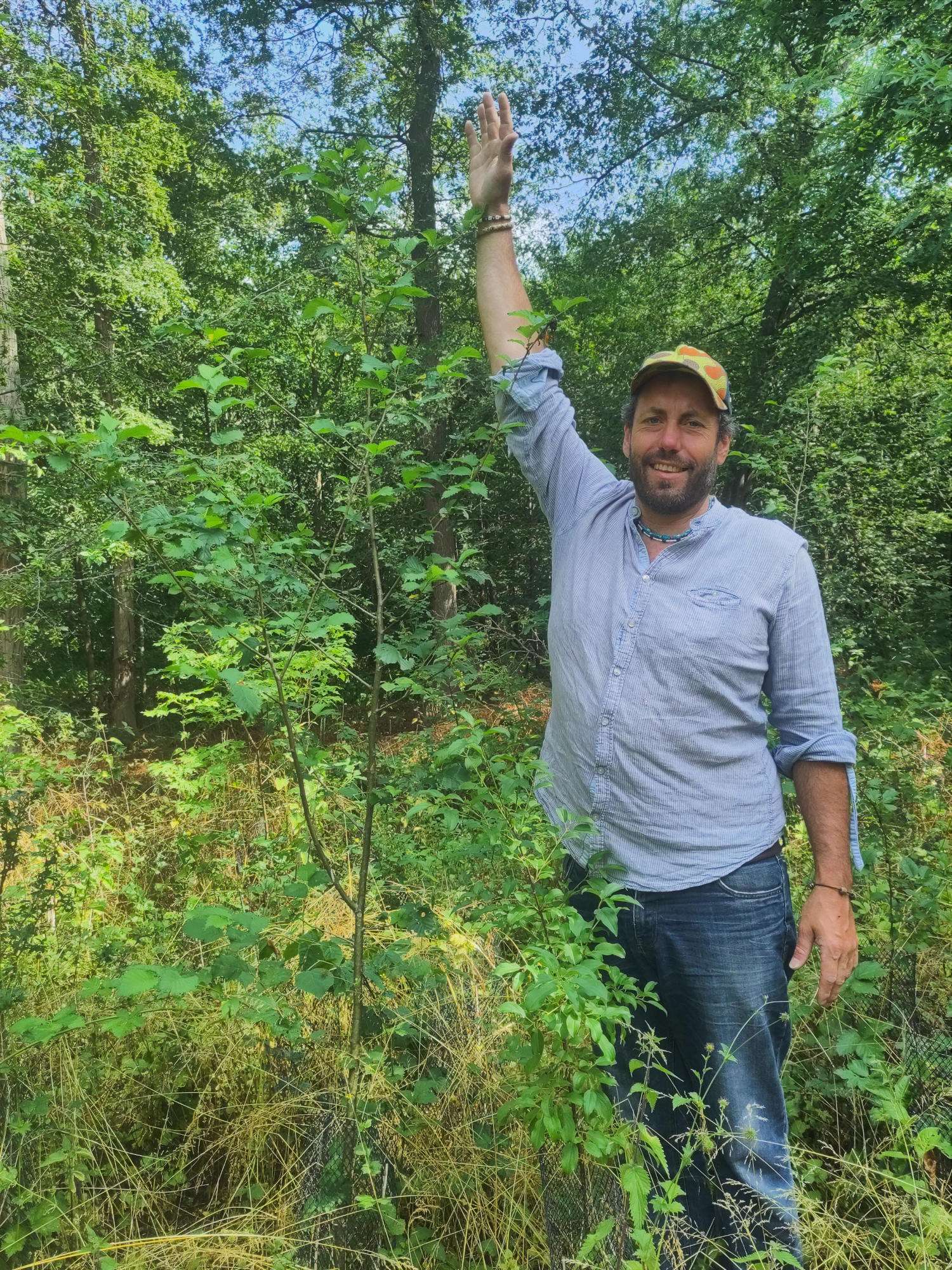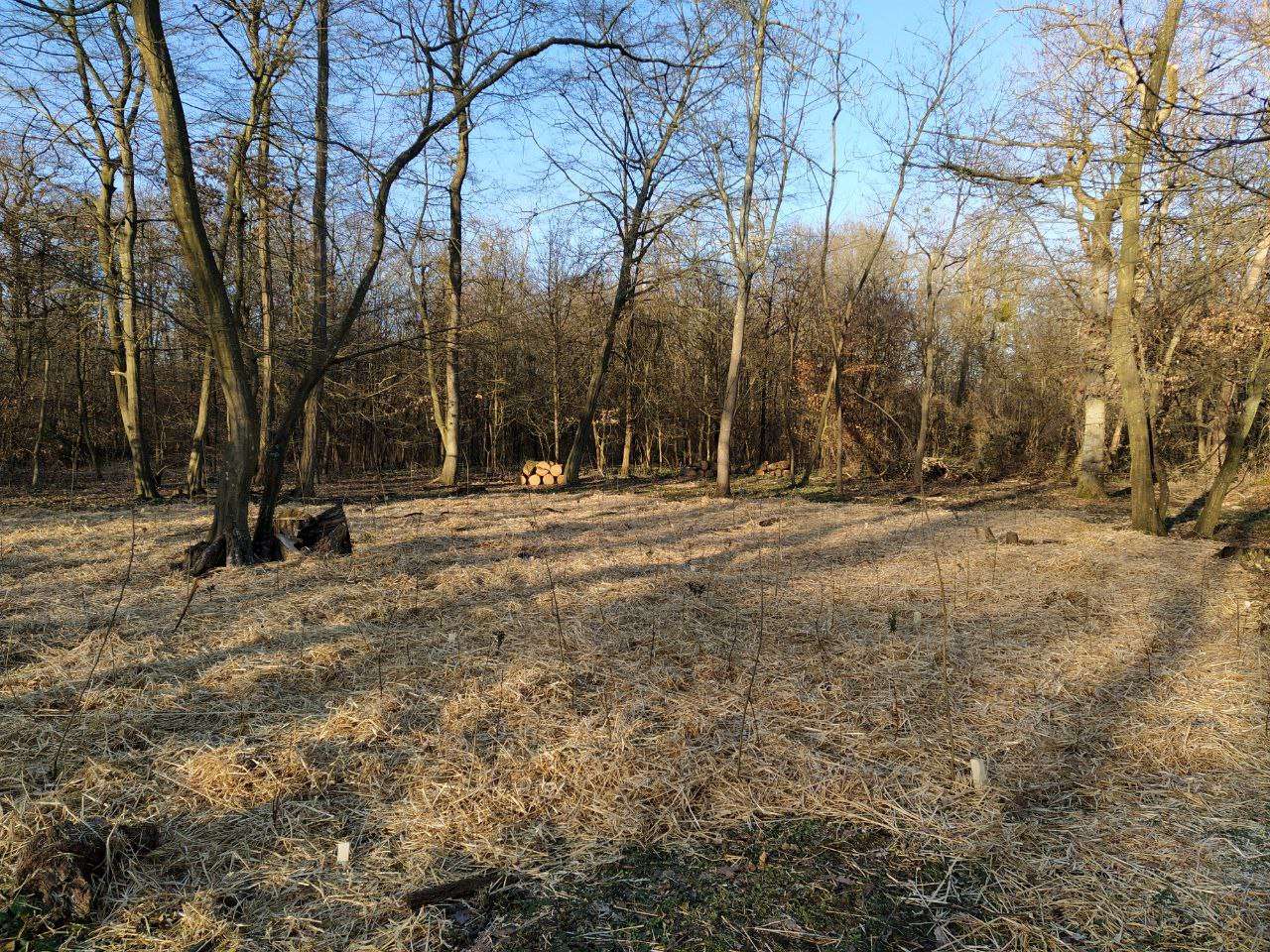
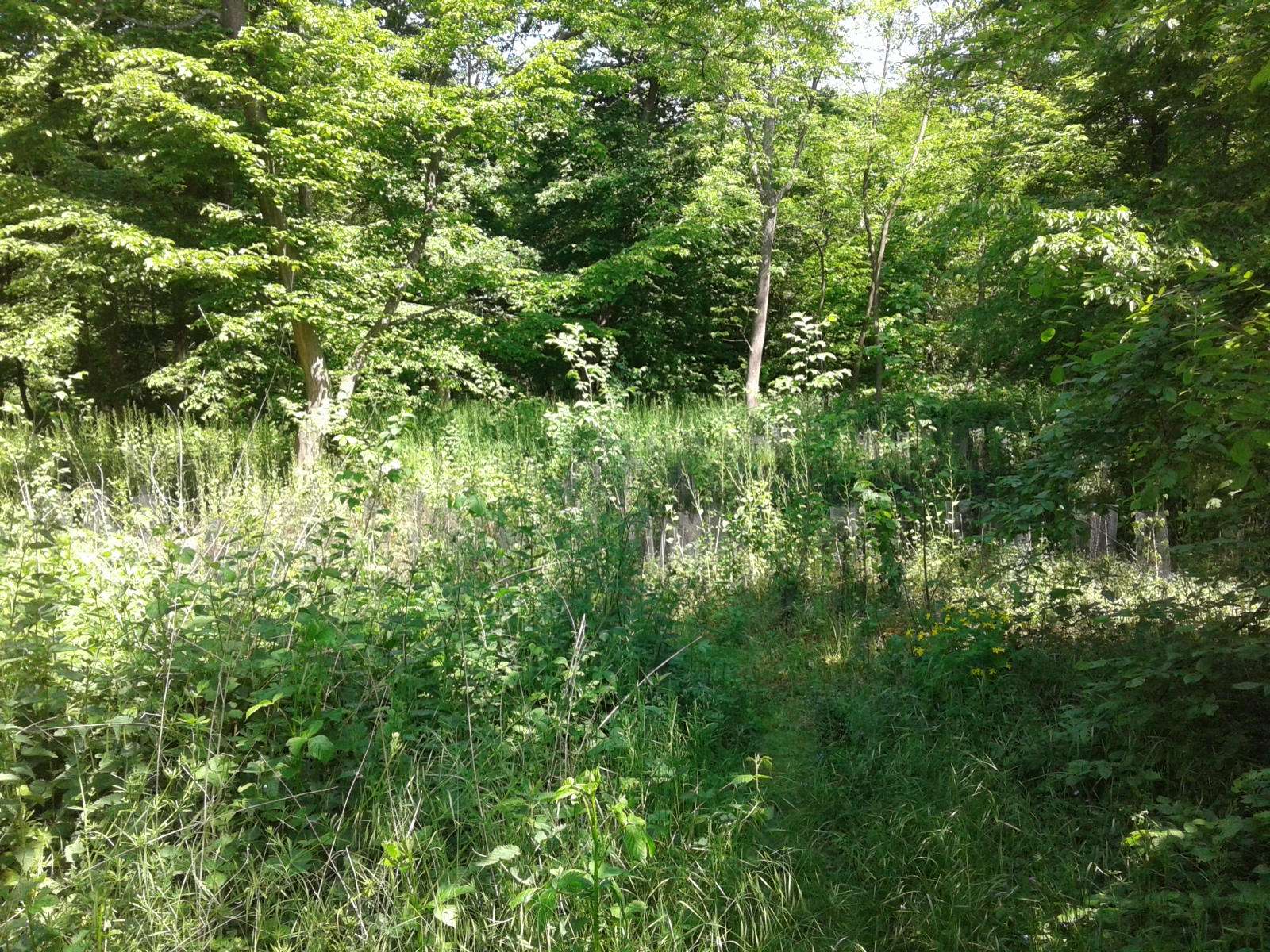
Période de plantation : février 2021
The association’s first plantation in the Val d’Oise, the Cergy experiment was carried out in a small clearing in the Bois de Cergy, in order to observe how a dense plantation using the Miyawaki method can be integrated into an existing wood and contribute to its regeneration. The participation of local residents and the people of Cergy made this pilot project very interesting from the outset.
This project is the fruit of an unprecedented collaboration between the Boomforest association, the Communauté d’Agglomération de Cergy-Pontoise, and an external financier, the CenergY company, part of the Coriance group, which manages the urban heating network of the Communauté d’Agglomération and which wished to continue its energy transition action by contributing to actions in favor of biodiversity in the conurbation in which it is located.
Planting location: Bois de Cergy, Cergy-Pontoise (95)
The plantation is located in the Bois de Cergy, on a small path close to the Chemin des voies (to the south) and not far from the Maraîchers playground (where a second plantation was created in 2023). The plantation site is a small clearing where fallen trees (chablis) were leaving a gap in the forest canopy: it was decided to experiment with the extent to which the Miyawaki method could accelerate forest regeneration in this location, while attempting to bring in a greater diversity of local species (the wood comes from plantations with species selected primarily for their growth speed, such as locust trees, rather than for their integration with the natural vegetation of the site, which can present problems of sustainability).
For this experiment, it was decided not to modify the state of the soil prior to planting, and to rely on existing forest litter.
existing forest litter. This is a departure from the classic Miyawaki protocol, in which tillage is a fundamental step in the planting process. This may be due to the soil problem (the soil, although made up of forest litter, retains a strong sandy component due to the artificial origin of the wood), but also to the much lower luminosity in this small clearing than on an open site. A second site was planted in 2023 a few hundred meters away, on more open ground, to try and understand whether it was the luminosity or the soil that explained this slower growth.
GPS coordinates : 49.02400,2.07709
The planting in pictures
Before planting: preparing plants and soil
Click on the images to see the caption
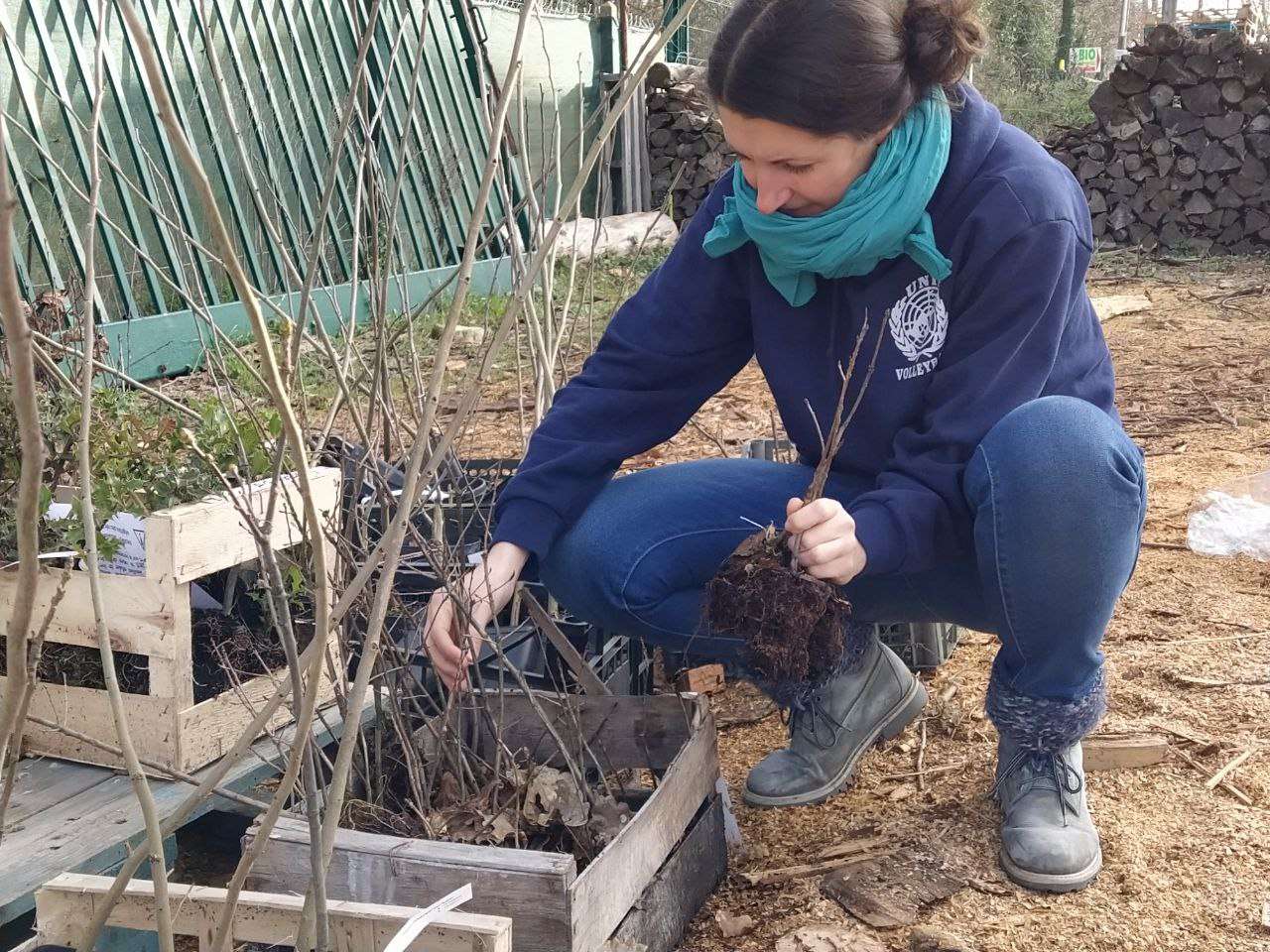
Before planting, the association's volunteers divide the seedlings into homogeneous groups: in this way, on each plot of the planted site, a consistent and homogeneous diversity of seedlings is guaranteed for each group of volunteers.
Planting in February 2021
Click on the images to see the caption
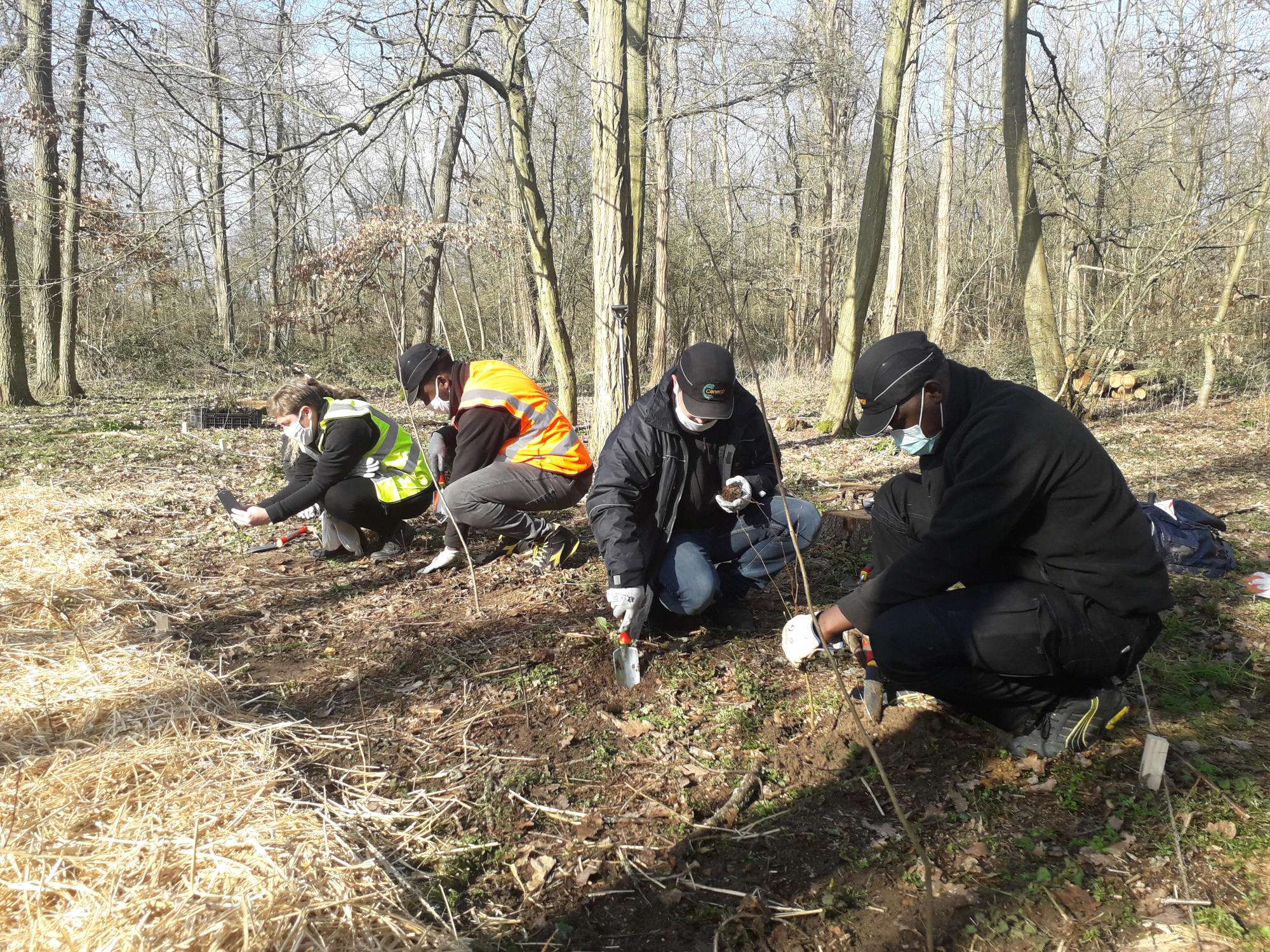
Let's get started! Employees of the project's funder, CenergY, get their hands in the soil to actively contribute to the realization of the project.
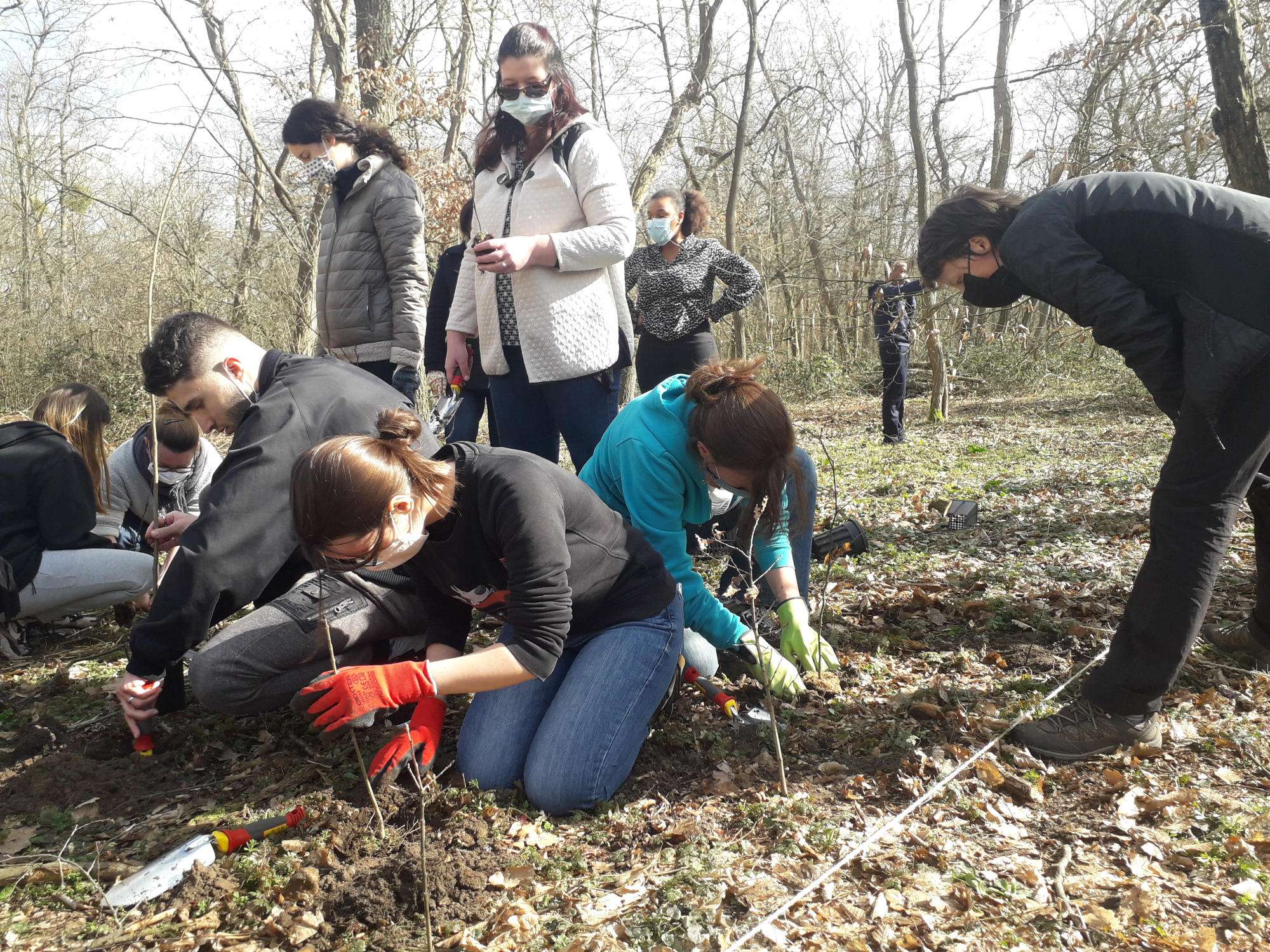
Dividing the plants into successive planting zones (marked by the strings) ensures that the plantation maintains a high, even planting density... but this means getting organized with your fellow planters! Attention to the plants goes hand in hand with that of the other volunteers 😉
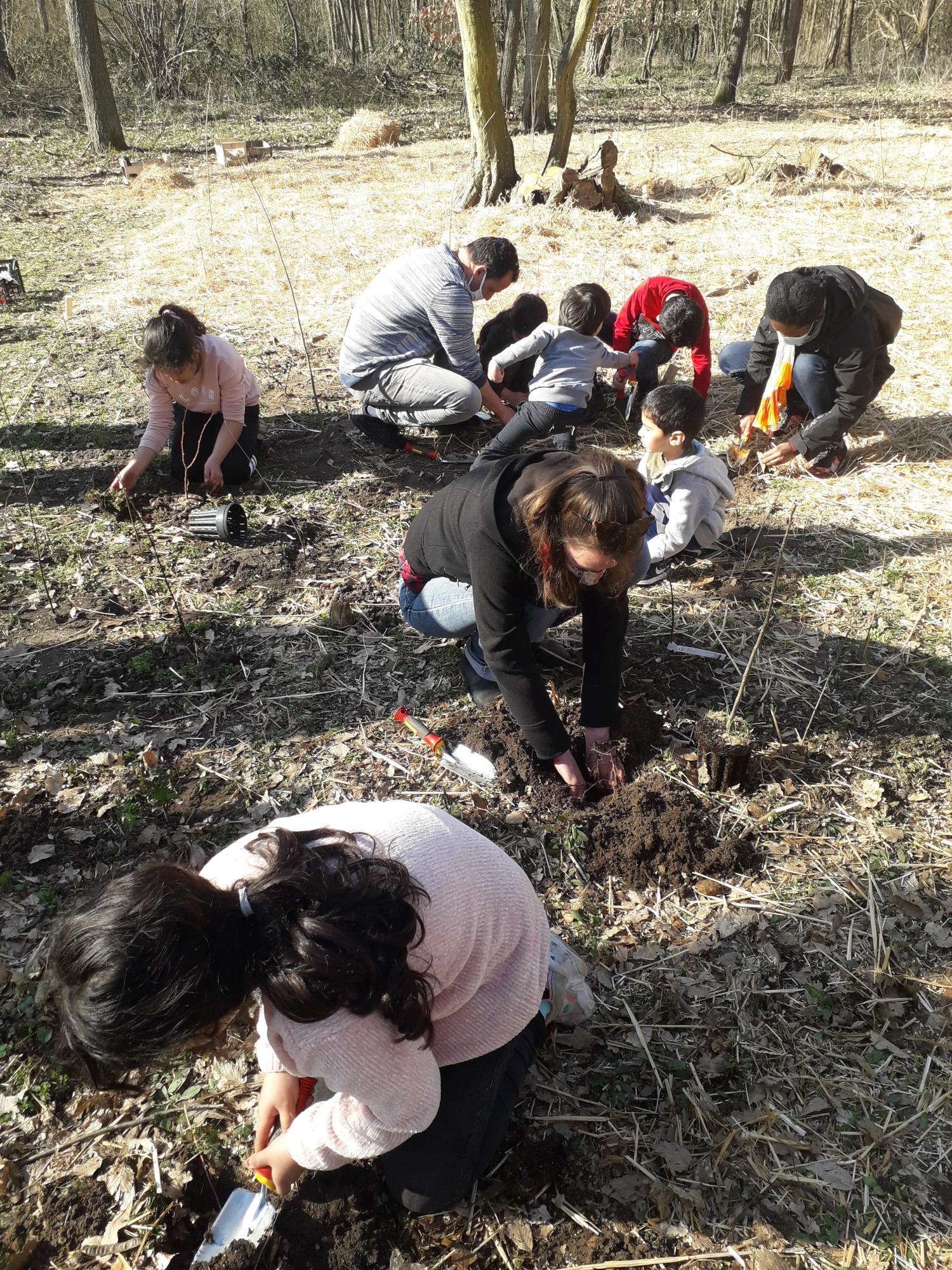
Planting is within everyone's reach, and we're always delighted to welcome a whole family!
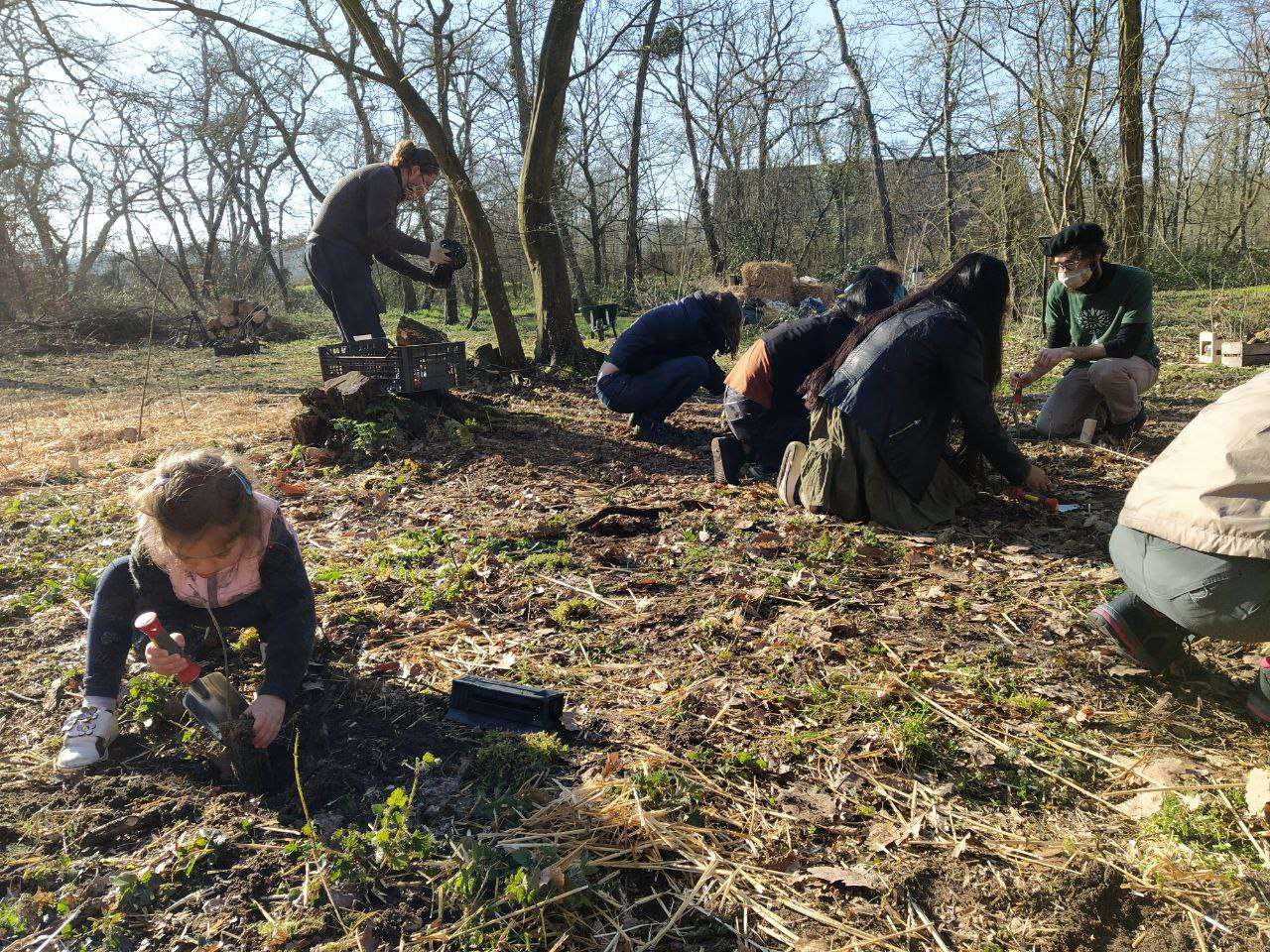
Some children quickly acquire a taste for planting and are still planting, even after their slot, unbeknownst to the adults!
Site evolution over time
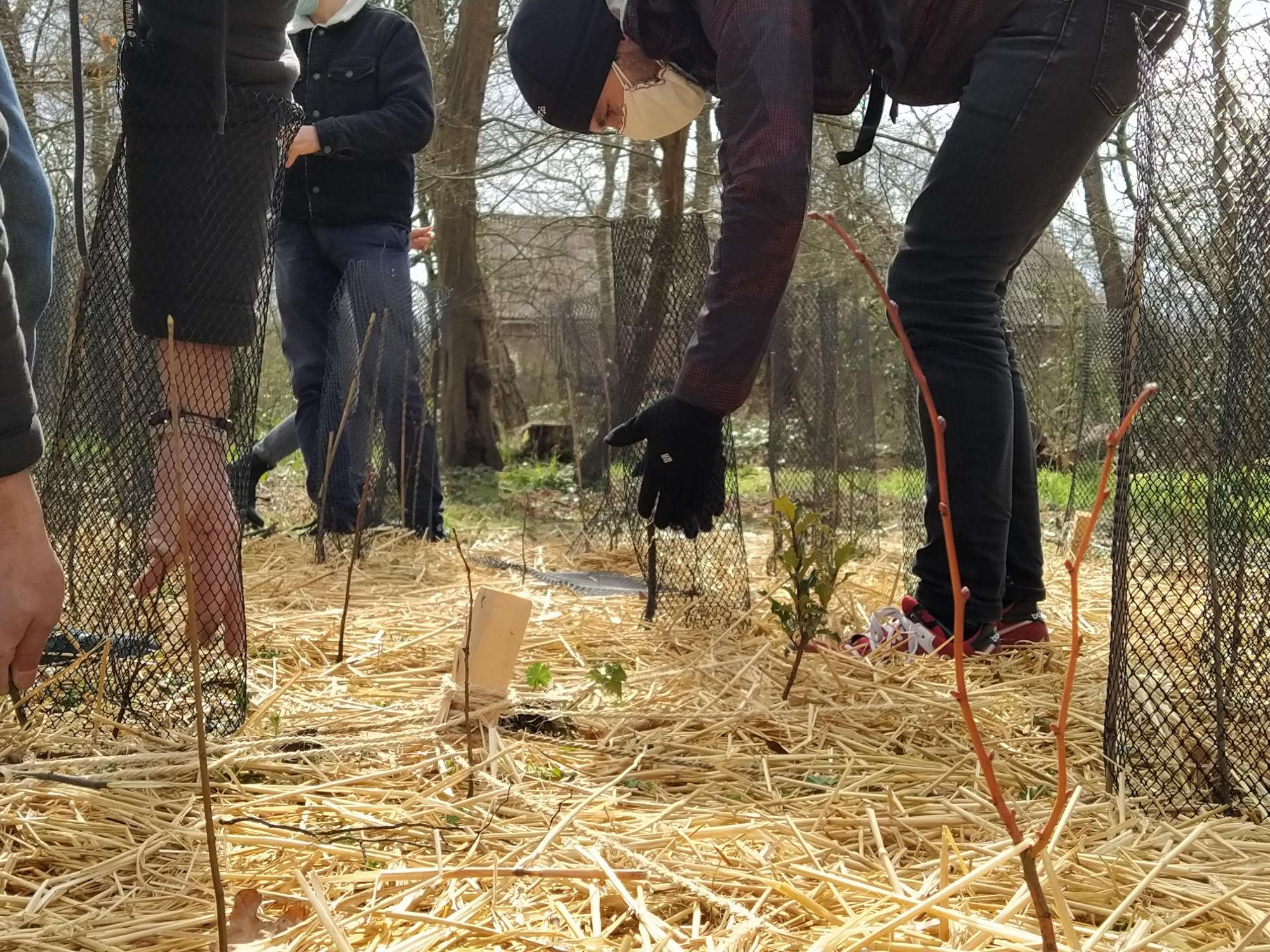
First operation after planting: the volunteers present during planting return to the site to install biodegradable sheaths to protect the plants from rodents. The plantation is located in a wood just across from market gardeners' premises, and strolling rabbits can be seen from time to time... Hurry up!
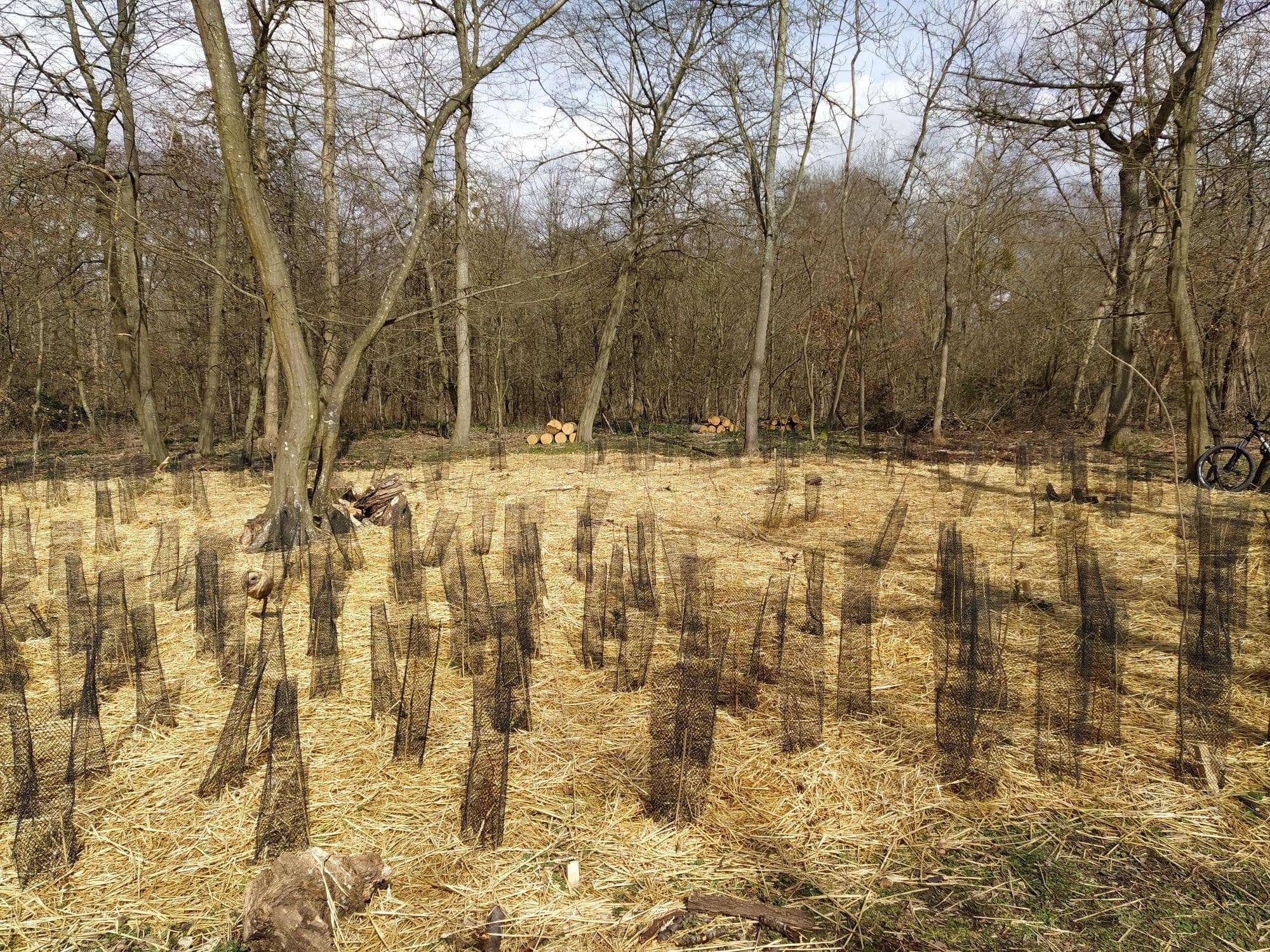
Thanks to the efforts of numerous volunteers, the operation was a success! This is the first time we've used this system, so how will the trees react?
